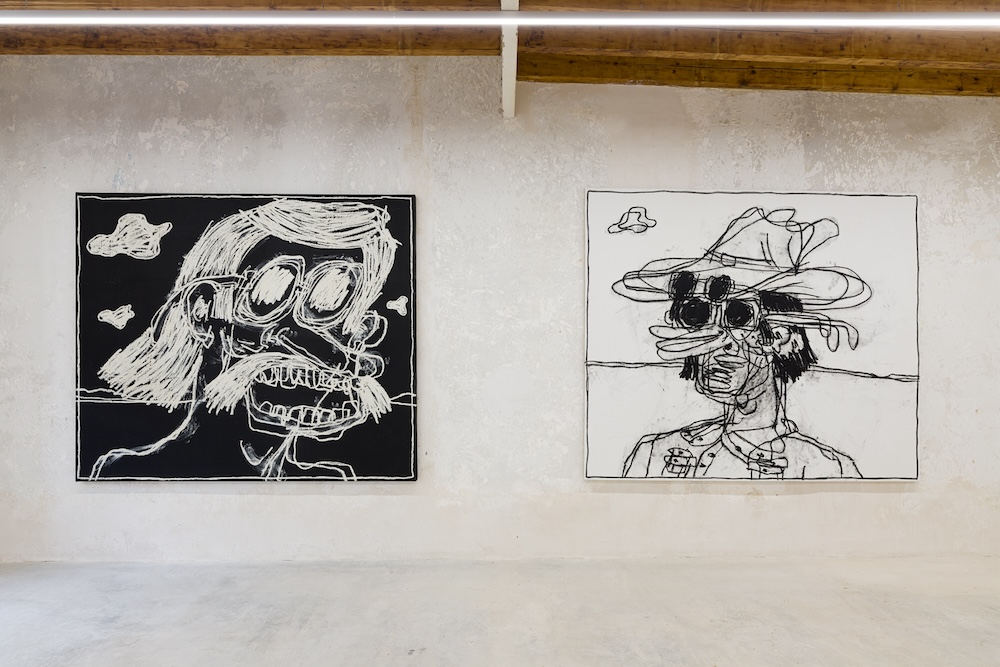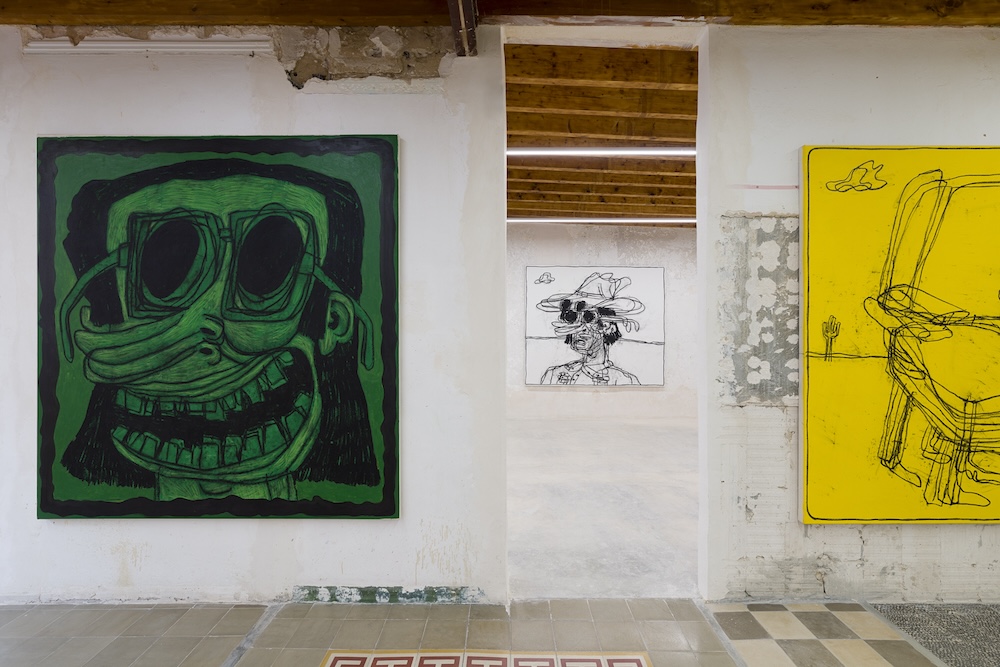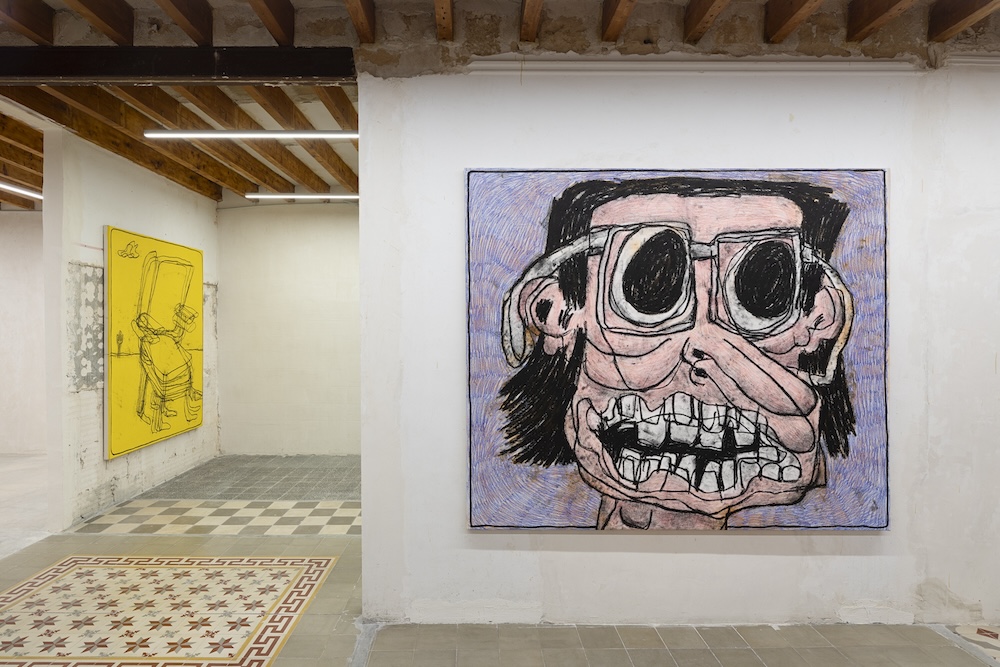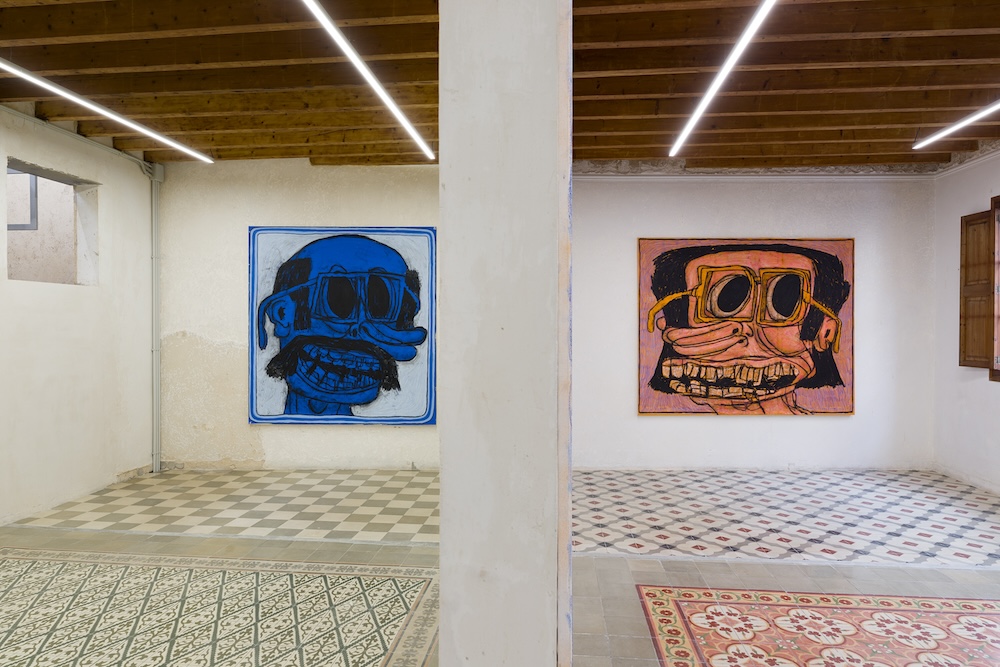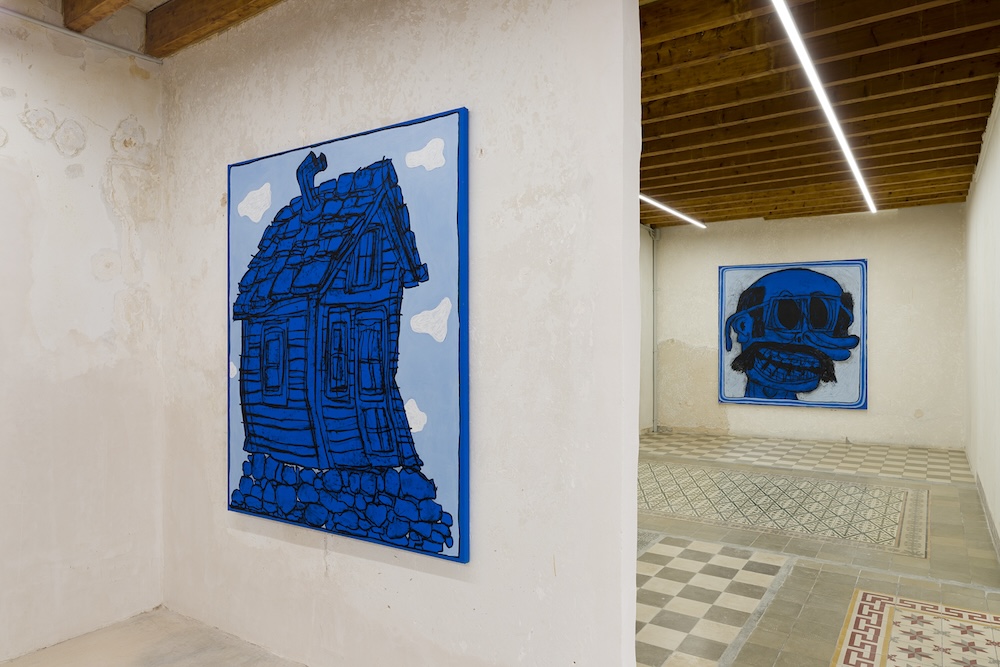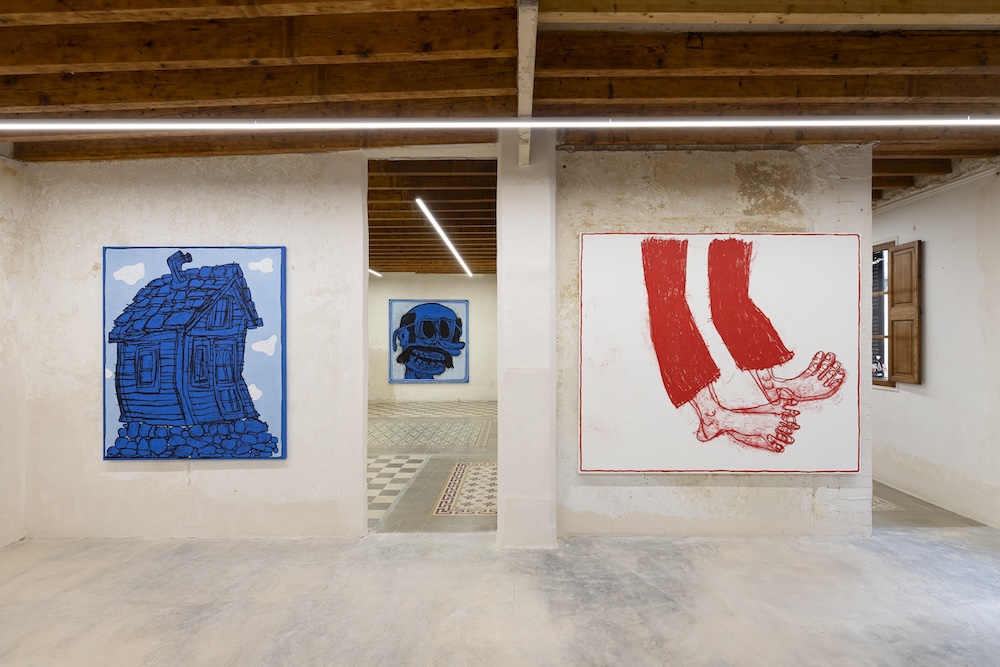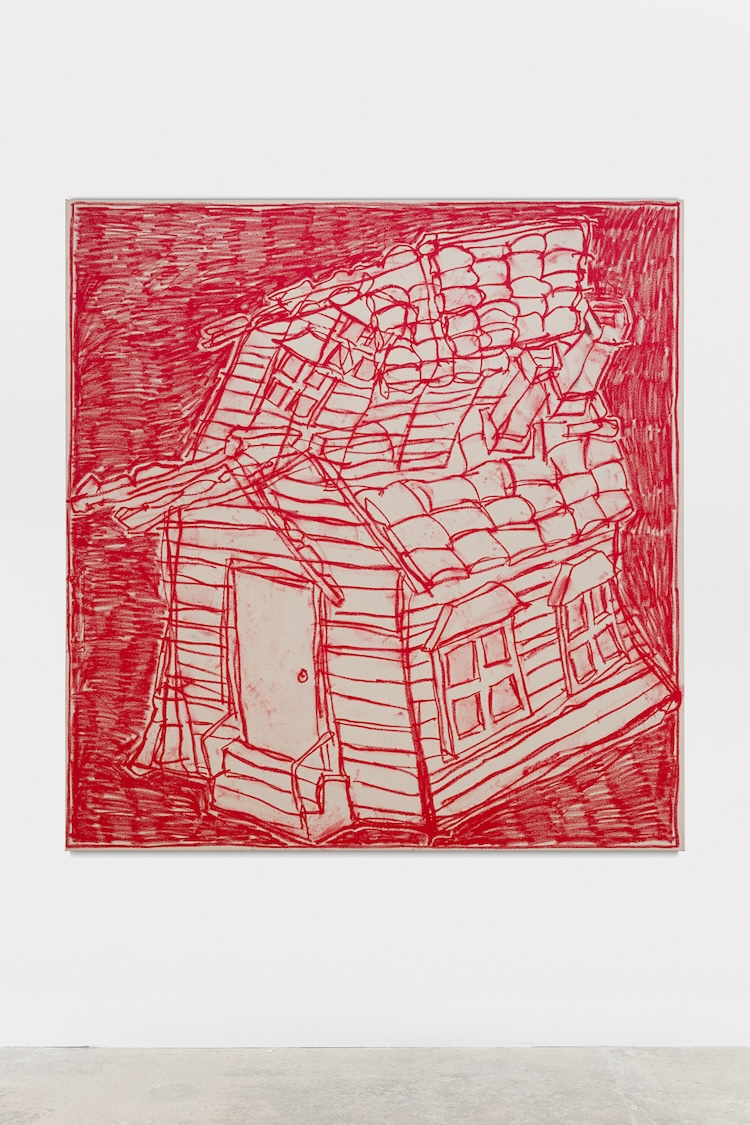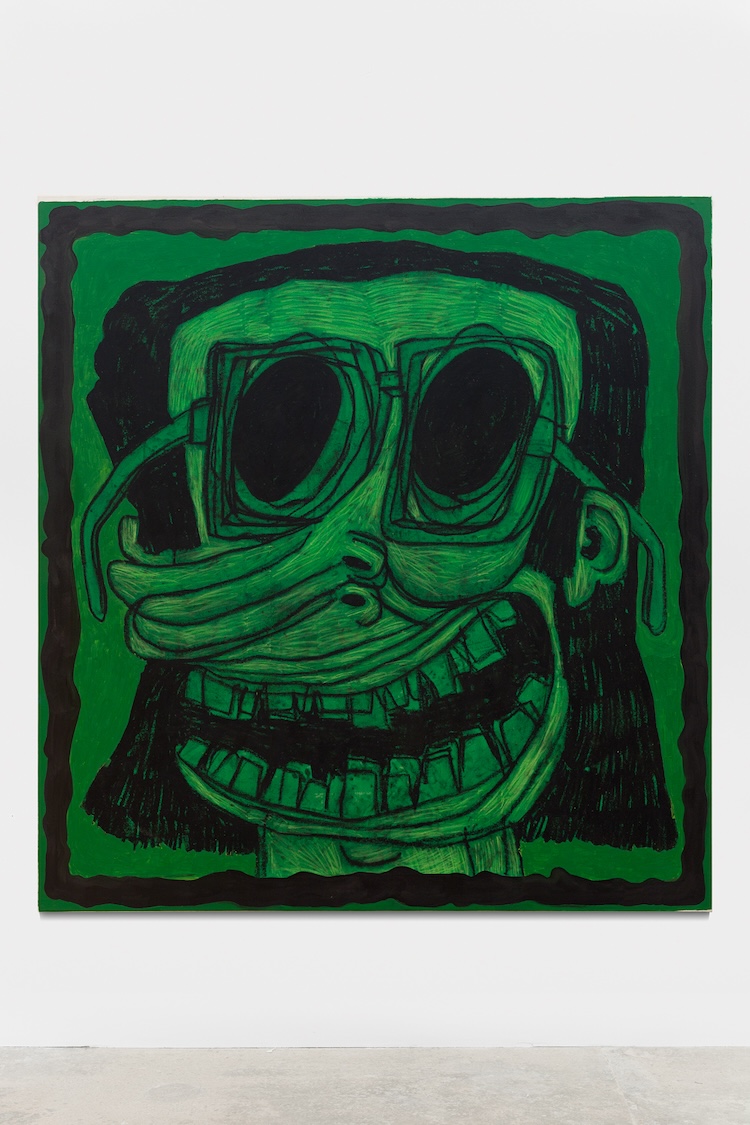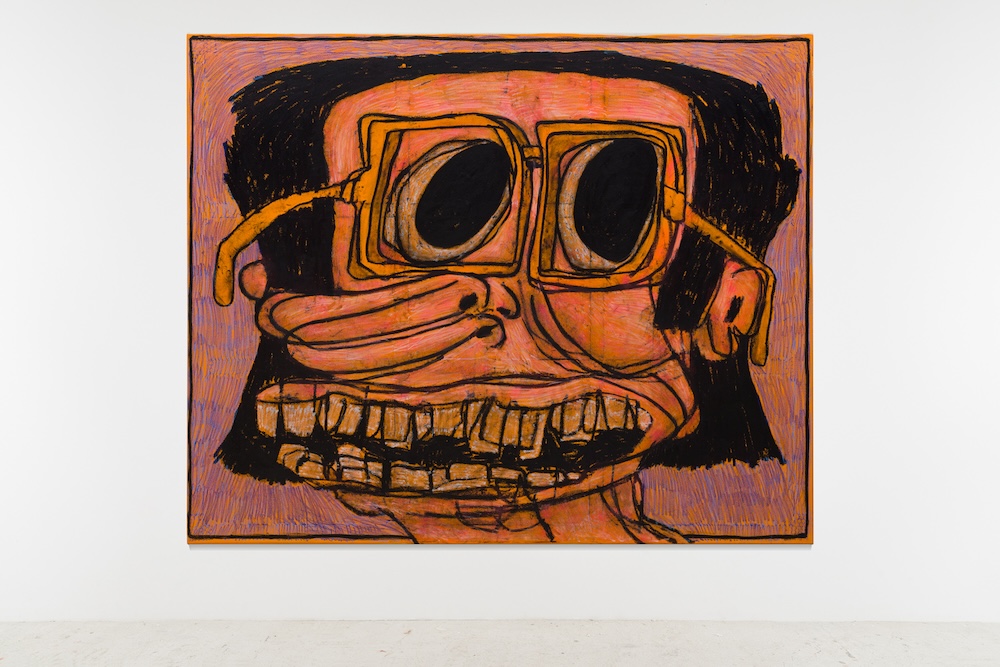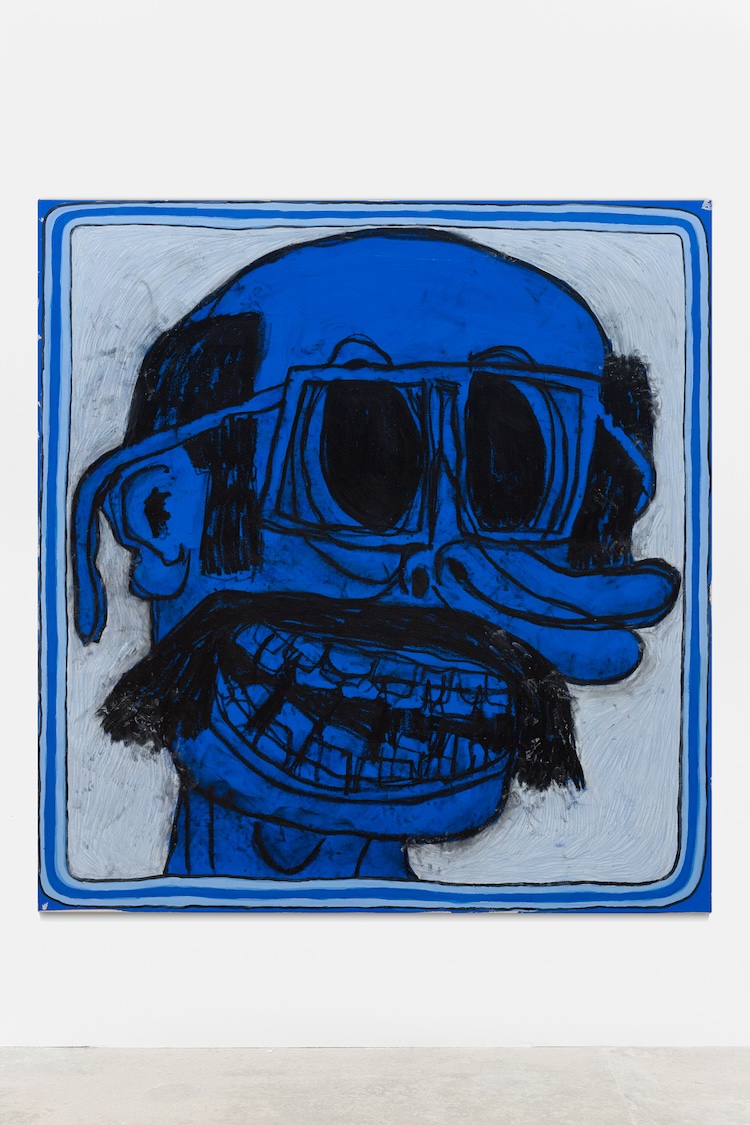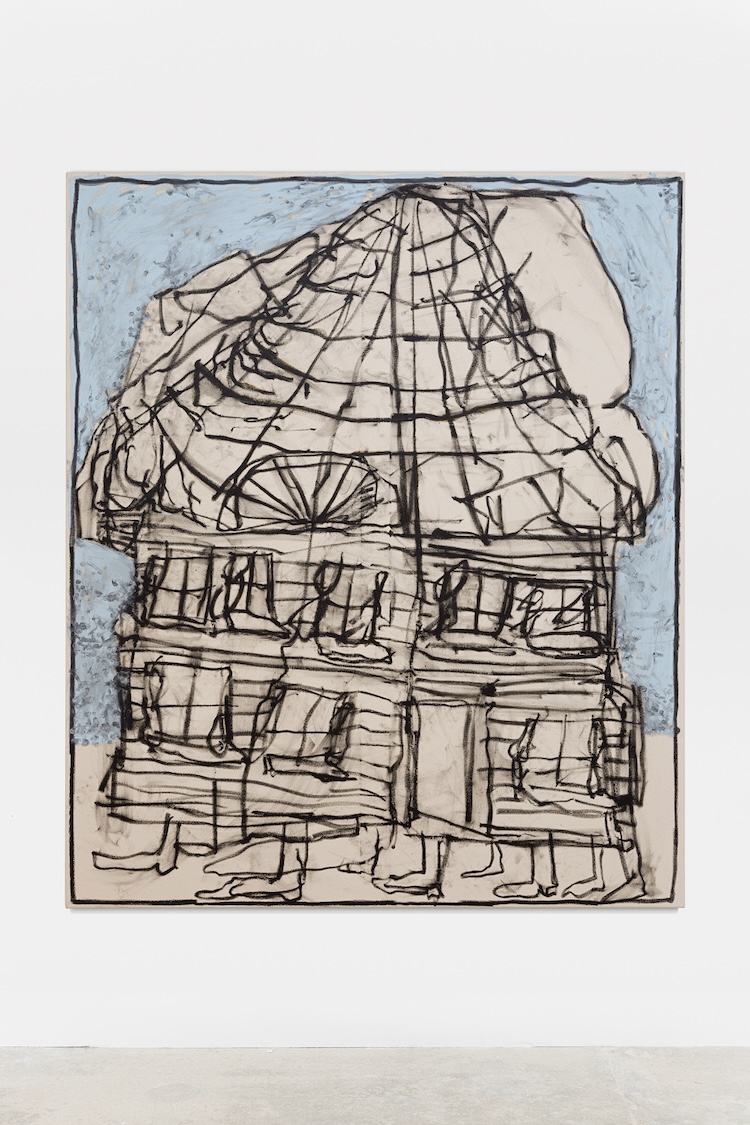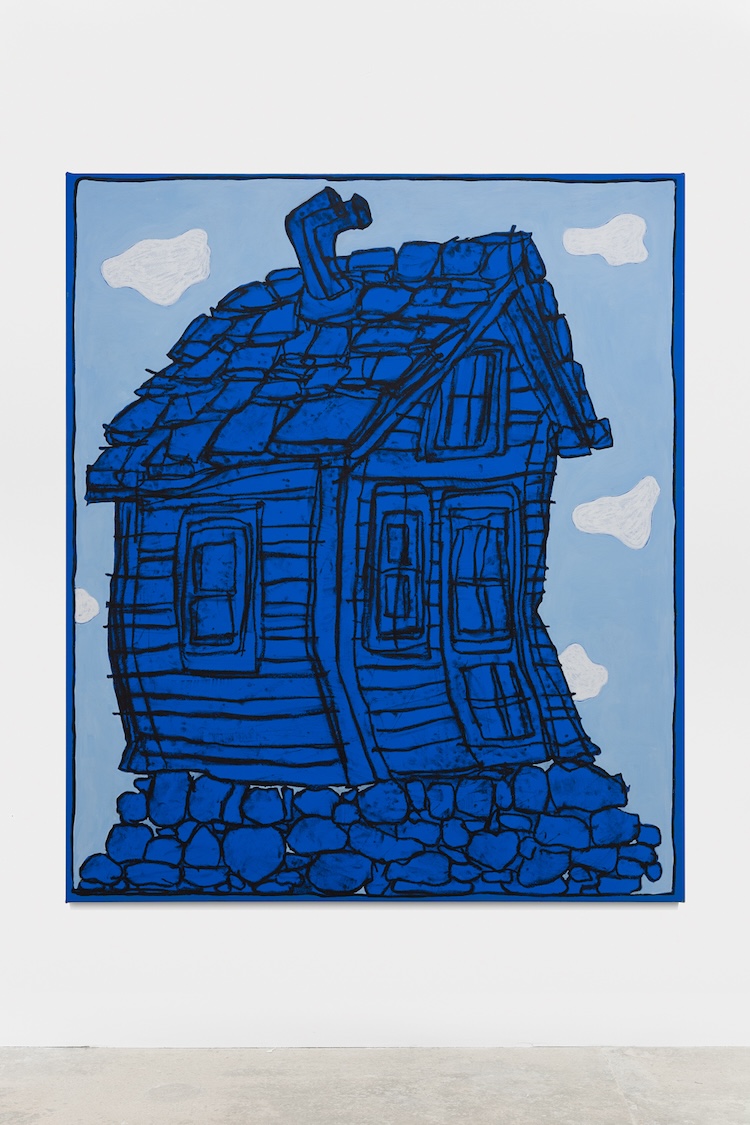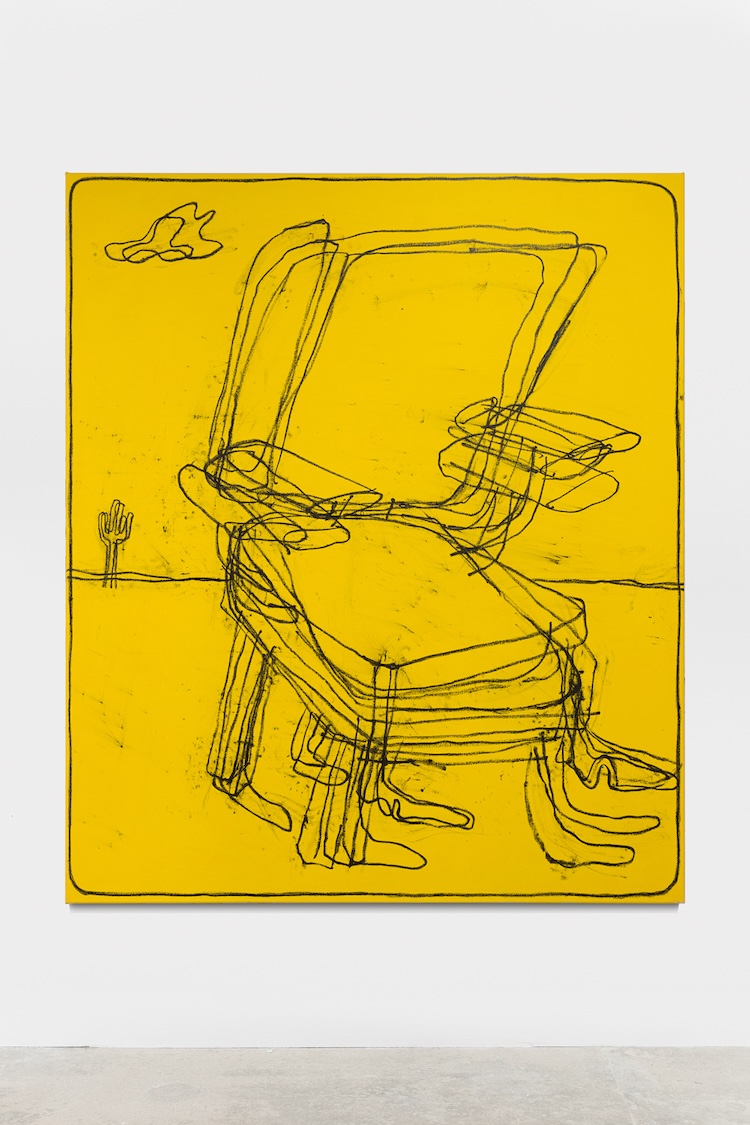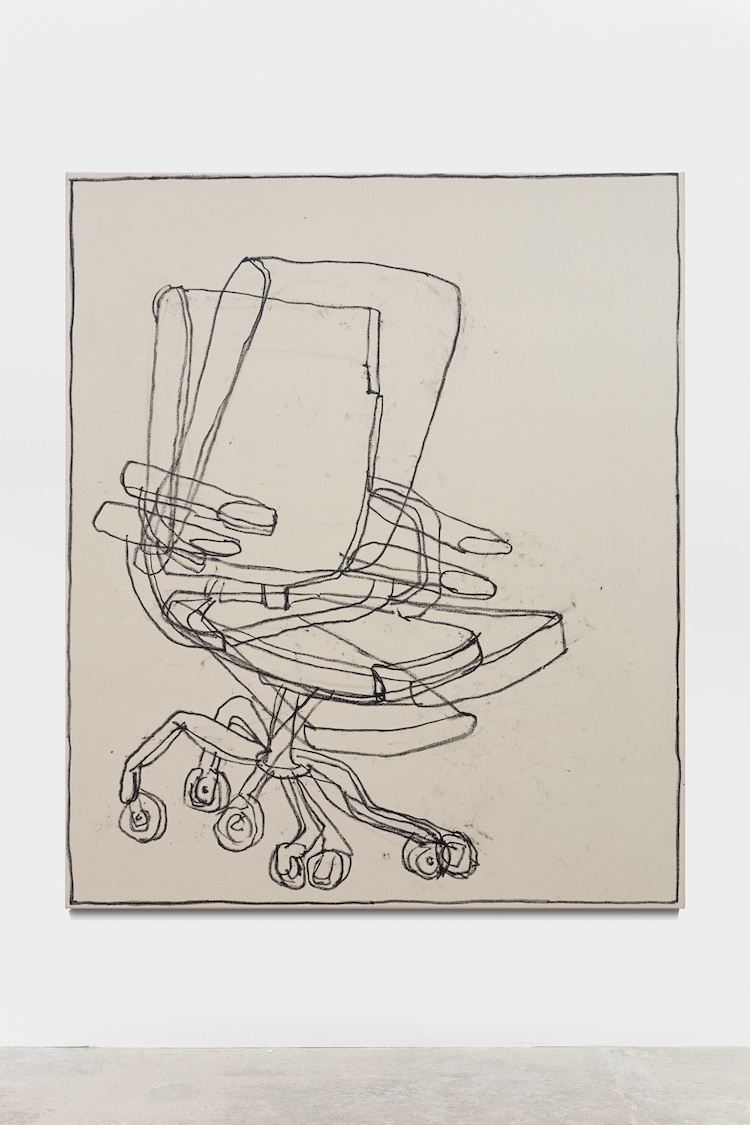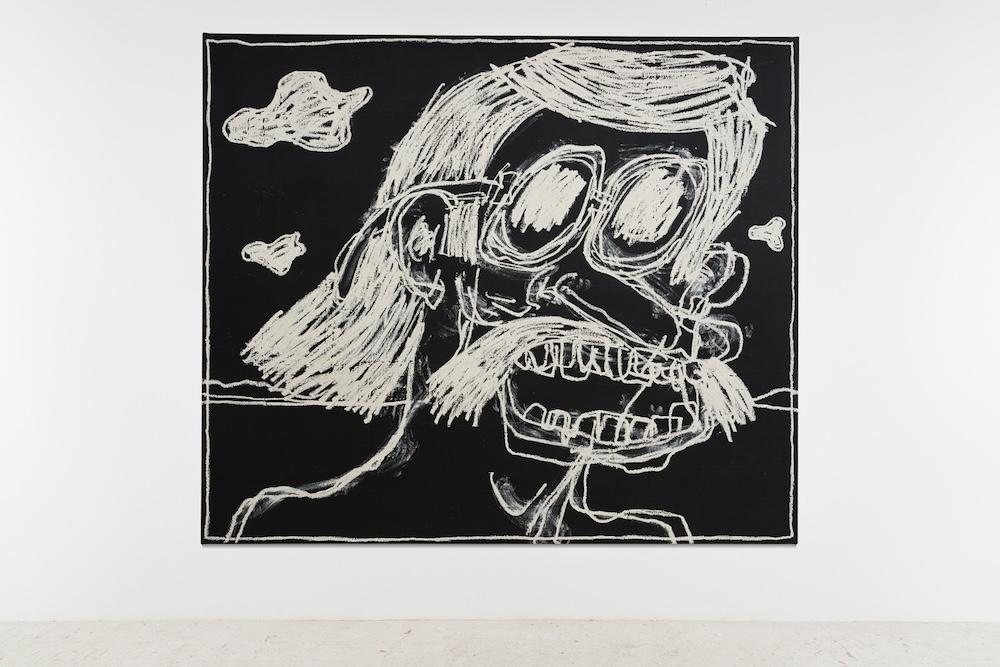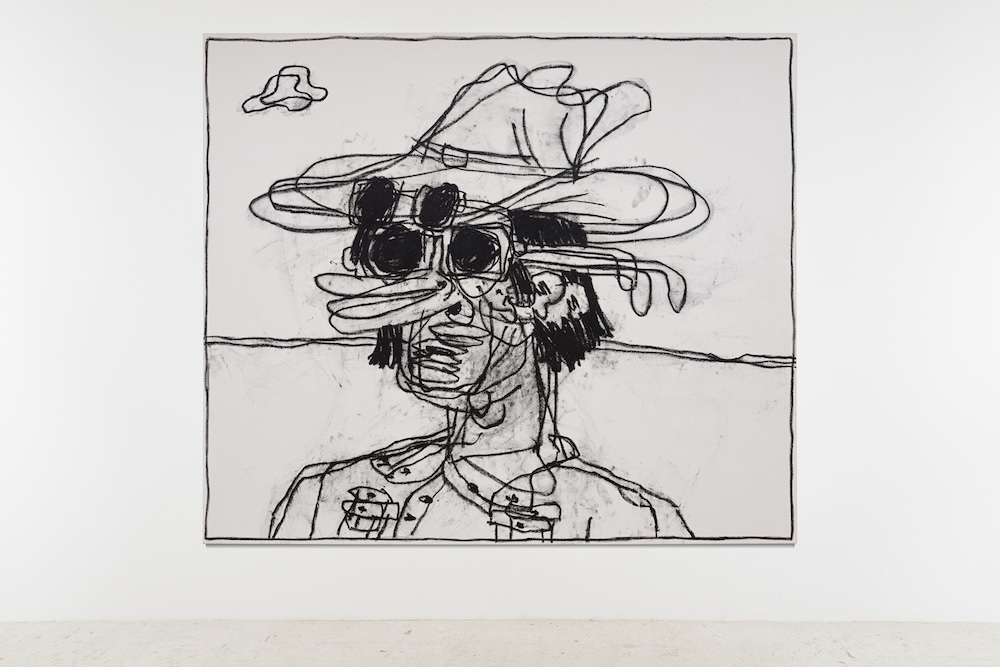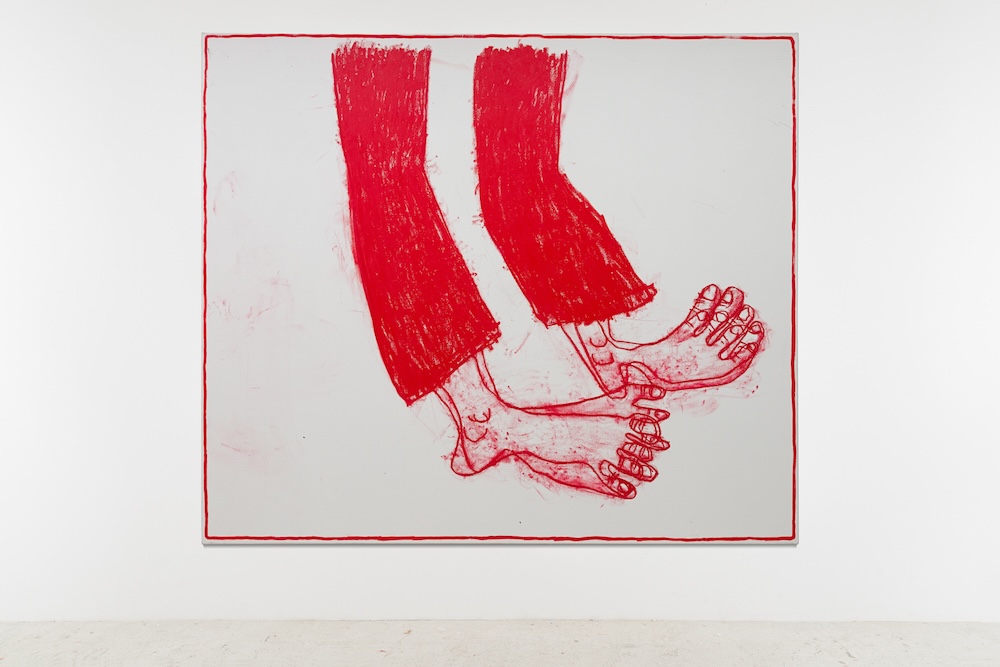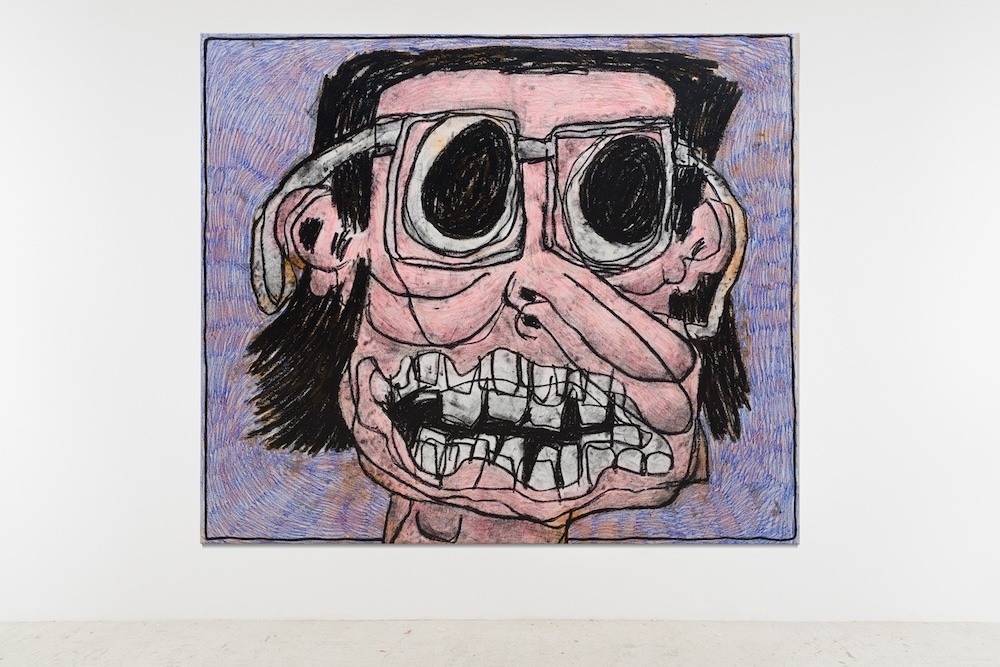A few weeks ago, we showcased Taylor White's work in our A Portfolio department, but now we are so excited and love what we see from White in his new solo show, Meat Dream, on view at L21 Gallery in Palma, Spain. In this recent body of work, we encounter unstable houses, and vibrating office chairs – transforming these archetypes into complex, movement-desperate structures, reminiscent of sculptural images.
As we look at the paintings we can envision the frantic process of drawing, this immediate urge to draw directly onto the canvas, leaving everything there in a raw and unfiltered form.
The “images” are recognizable, we know the house, the chair, all of these naïve models of our upbringing. The use of familiar symbols renders them identifiable but the strength and depth make them distinct. White’s intuitive approach to drawing makes an alteration to the proportions, due to the fast-pace, time-limited dynamic way of painting.
The work conveys in a palpable feeling of being “on edge”, caught in a dichotomy of panic and euphoria. In the drawings we perceive the compression, the urgency of producing that is apparent in every series. The overlaying of drawings creates a sense of perpetual motion that increases the paradoxical spectrum of feelings.
As we begin to complete this body of work it prompts us to question the underlying emotions associated with these archetypes. Do we feel the same towards a house? Towards a chair? What do these symbols truly represent in our current societal landscape?
When approaching, adapting and restructuring these archetypes, a new layer meaning emerges – Through a dark-humored perspective to these all-time known prototypes, we find simplicity and immerse ourselves to cancel out the external influences.
In an interview, the artist revealed that when he started painting the art took over his home, making him relocate. It is this sensation of urgency that echoes strongly throughout his artworks, evoking a feel of immediacy and intensity. In the same interview White admitted to being intimidated by color theory and art principles initially, but then it changed when he started to rely on intuition. And this proposal is shown today.” —Zé Ortigão




